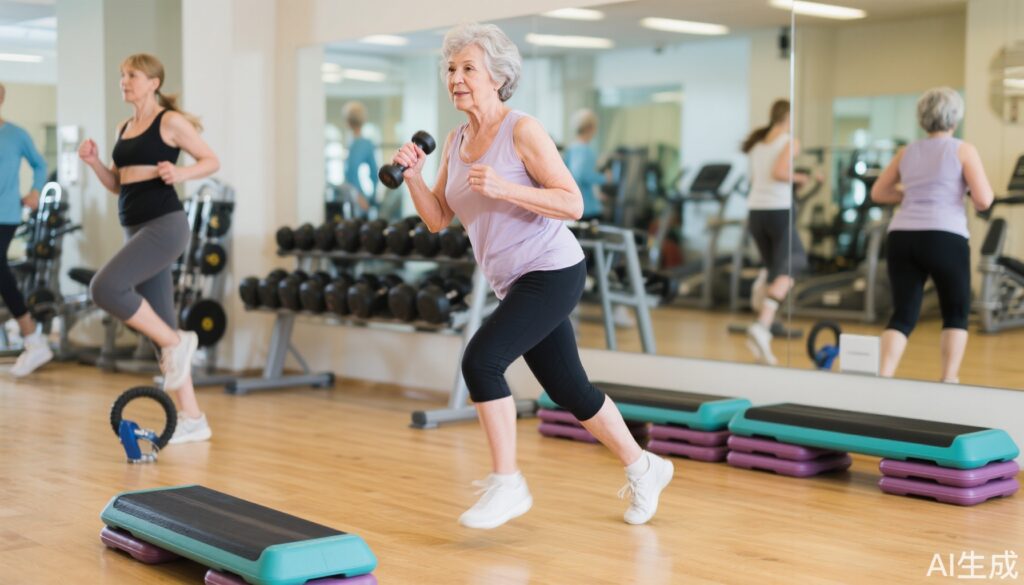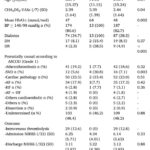Highlights
– The execution order of aerobic and resistance exercises significantly impacts glycemic control during physical activity in postmenopausal women with type 2 diabetes mellitus (T2DM).
– The combination of aerobic followed by resistance exercise (AR) resulted in lower blood glucose levels compared to other modalities.
– Both exercise types decreased systolic blood pressure, with AR inducing a notable decrease in diastolic blood pressure.
– No significant differences were found in heart rate variability across exercise orders, suggesting a broad impact of combined exercise.
Study Background and Disease Burden
The global rise of type 2 diabetes mellitus (T2DM) poses a significant public health challenge, particularly among postmenopausal women. Factors such as decreased estrogen levels exacerbate the risk for cardiovascular diseases and insulin resistance. The menopausal transition generally leads to increased visceral fat, reduced metabolic rate, and enhanced inflammatory responses, all of which contribute to worsened glycemic control. Given the effectiveness of both aerobic and resistance exercises in managing T2DM, understanding the optimal order for combining these exercises is crucial for this vulnerable population. This study investigates the combined efficacy of aerobic and resistance training to improve glycemia, blood pressure, and heart rate variability (HRV).
Study Design
A randomized crossover clinical trial was conducted involving 15 postmenopausal women diagnosed with T2DM. Each participant underwent three distinct experimental conditions:
1. **Condition I (AR)**: 30 minutes of aerobic exercise followed by 30 minutes of resistance training.
2. **Condition II (RA)**: 30 minutes of resistance training followed by 30 minutes of aerobic exercise.
3. **Condition III (CON)**: A control session where participants did not engage in any exercise.
Glycemia was assessed at multiple time points: pre-exercise, mid-exercise, immediately post-exercise, and at 20, 40, and 60 minutes post-exercise. Blood pressure was measured pre-exercise and post-exercise (20, 40, and 60 minutes). HRV was monitored pre-exercise and at 10, 30, and 50 minutes following exercise sessions.
Key Findings
The results of the study provided valuable insights into the efficacy of different exercise orders:
1. **Glycemic Response**: During the AR condition, participants exhibited significantly lower blood glucose levels compared to the CON (p = 0.01). Additionally, the AR condition resulted in a reduced glycemic curve area during exercise when contrasted with the RA and CON conditions (p < 0.05). Post-exercise, all conditions effectively lowered blood glucose levels (p < 0.05), highlighting the benefits of both exercise modalities.
2. **Blood Pressure Impact**: Both aerobic and resistance training sessions resulted in a significant reduction in systolic blood pressure (p < 0.05). Notably, only the AR sequence induced a significant reduction in diastolic blood pressure post-exercise (p = 0.01), suggesting a potential cardiovascular protective effect with this order of exercise.
3. **Heart Rate Variability**: Regardless of exercise order, all sessions led to a decrease in time-domain indices of HRV (p < 0.05), implying that exercise has a broad, beneficial impact on autonomic function, though the specific order did not influence the HRV response.
These findings indicate that executing aerobic exercise prior to resistance training may be a superior strategy for enhancing glycemic control and lowering blood pressure in this demographic.
Expert Commentary
The findings of this study align with current clinical observations suggesting that structured exercise regimens can significantly mitigate the risks associated with T2DM and cardiovascular disease in postmenopausal women. The positive effects observed with the AR sequence warrant further investigation with larger sample sizes and longer follow-ups to establish a robust evidence base. However, the specific mechanisms underlying the differential impacts of exercise order on glycemia and blood pressure remain poorly understood and warrant further exploration. Additionally, the study’s limitations, including the small sample size and short intervention duration, suggest caution when generalizing these results to the broader population.
Conclusion
This study highlights the importance of exercise execution order for postmenopausal women with T2DM. The findings advocate for prioritizing aerobic exercise before resistance training to maximize glycemic control and enhance overall cardiovascular health. Future studies should focus on replicating these results over a larger population to inform clinical guidelines and optimize exercise prescriptions for managing T2DM.
References
Garcês CP, Silva JC, Sisconeto TM, Mariano IM, Cunha ACR, Cheik NC, Puga GM. Effects of acute aerobic and resistance exercise execution order on glycemia, blood pressure, and heart rate variability in postmenopausal women with type 2 diabetes mellitus: A randomized controlled trial. J Bodyw Mov Ther. 2025 Sep;43:310-317. doi: 10.1016/j.jbmt.2025.05.009. Epub 2025 May 5. PMID: 40483141.



